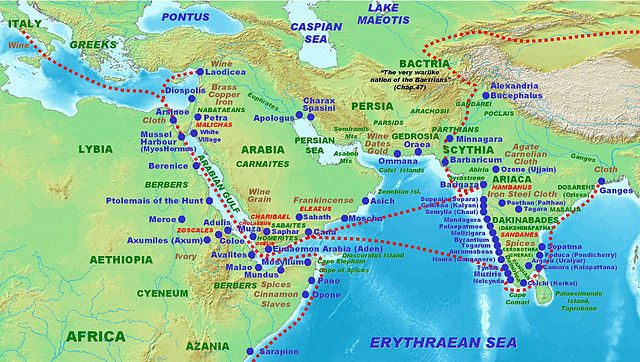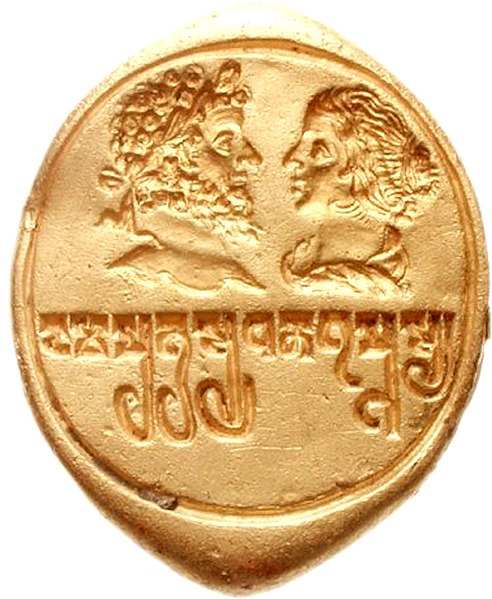Indo-Roman trade relations
Videos
Page
Indo-Roman trade relations was trade between the Indian subcontinent and the Roman Empire in Europe and the Mediterranean Sea. Trade through the overland caravan routes via Asia Minor and the Middle East, though at a relative trickle compared to later times, preceded the southern trade route via the Red Sea which started around the beginning of the Common Era (CE) following the reign of Augustus and his conquest of Egypt in 30 BCE.

Roman trade in the subcontinent according to the Periplus Maris Erythraei 1st century CE

Roman gold coins excavated in Pudukottai, Tamil Nadu, India. One coin of Caligula (37–41 CE), and two coins of Nero (54–68). British Museum.

Kushan ring with portraits of Septimus Severus and Julia Domna.

Coin of the Roman Emperor Augustus found at the Pudukottai hoard. British Museum.
Spice trade
Videos
Page
The spice trade involved historical civilizations in Asia, Northeast Africa and Europe. Spices such as cinnamon, cassia, cardamom, ginger, pepper, nutmeg, star anise, clove, and turmeric were known and used in antiquity and traded in the Eastern World. These spices found their way into the Near East before the beginning of the Christian era, with fantastic tales hiding their true sources.

European access to the economically important Silk Road (red) and spice trade routes (blue) was blocked by the Seljuk Empire c. 1090, causing the Crusades, and by the Ottoman Empire c. 1453, which spurred the Age of Discovery and European colonialism.

The spice trade from India attracted the attention of the Ptolemaic dynasty, and subsequently the Roman empire.

Spice Bazaar used for the spice trade during the Ottoman Empire in Istanbul

Image of Calicut, India from Georg Braun and Frans Hogenberg's atlas Civitates orbis terrarum, 1572.